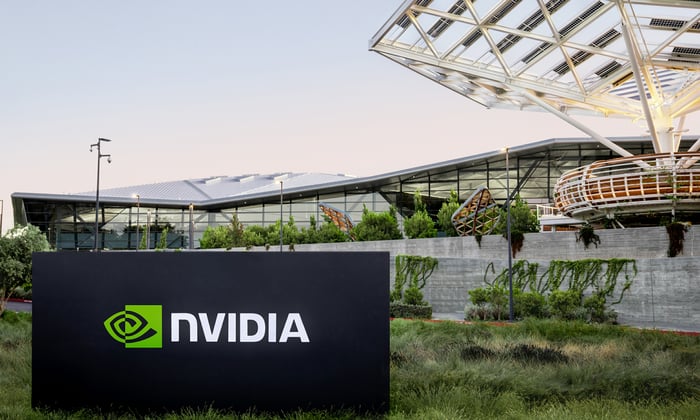Roughly a year ago, Nvidia ( NVDA 0.86%) was at a pivotal point in its history. The leading AI chip manufacturer was unveiling its Blackwell architecture, a new system that, according to CEO Jensen Huang in an interview with CNBC, was experiencing overwhelming demand. Blackwell was officially introduced in March 2024, and the fourth quarter marked the first time its revenue was included in Nvidia’s financials.
Blackwell represented the beginning of Nvidia’s new strategy: releasing updates to its chips or entire platforms every year. Since then, this architecture has fueled significant growth in Nvidia’s earnings, with Blackwell’s data center revenue jumping 17% quarter over quarter. In the earnings report, Huang stated, "The AI race is underway, and Blackwell is the core platform." Nvidia’s stock has mirrored this momentum, rising 40% year to date.
Given this trajectory, it’s natural to speculate about Nvidia’s position as the story unfolds—such as where it might stand two years after Blackwell’s debut. Here’s what past trends indicate.

Image source: Nvidia.
Nvidia's path in AI
First, let’s look at Nvidia’s journey in the AI sector so far. The company has long been a dominant force in graphics processing units (GPUs), initially focusing on the gaming industry. As the versatility of GPUs became apparent, Nvidia introduced the CUDA parallel computing platform to broaden their applications. When AI’s potential became evident, Nvidia quickly shifted its attention to this promising field.
This strategic pivot paid off, securing Nvidia’s leadership in the AI chip market. The superior performance and speed of its GPUs have maintained its dominance, resulting in multiple quarters of double- and triple-digit revenue increases and robust profitability—recently, gross margins have typically exceeded 70%.
To maintain its lead, Nvidia has pledged to keep innovating, promising annual chip updates. This began with Blackwell’s launch about a year ago, followed by the Blackwell Ultra update a few months later. The next major release, the Vera Rubin system, is expected toward the end of next year.
From platform to platform
All of Nvidia’s platforms are designed to work together smoothly, allowing customers to adopt the current system and easily upgrade to the latest advancements as they become available. However, as previously noted, major tech companies are eager to access the newest systems as soon as possible to stay competitive in the AI race.
So, what might Nvidia’s situation look like 24 months after Blackwell’s introduction? Current indicators point to continued double-digit revenue growth—Wall Street’s consensus projects a 33% revenue increase next year compared to this year. With the upcoming Rubin release, demand is expected to rise further as clients seek the most advanced AI solutions.
But how might Nvidia’s share price respond? Historical patterns offer some insight. Previously, Nvidia’s major product launches occurred every two years. For example, the Ampere platform launched on May 14, 2020, and Hopper debuted on September 20, 2022. In both cases, Nvidia’s stock soared over the following two years—rising 120% after Ampere and over 700% after Hopper.
NVDA data by YCharts
What history says
Looking at past performance, Nvidia’s stock appears poised for another triple-digit increase two years after Blackwell’s launch. If we consider the first quarter that included Blackwell revenue—which ended January 26, 2025—the stock has already gained about 30%. There’s still ample time for Nvidia to generate more Blackwell sales and potentially see its share price multiply several times by early 2027.
For example, a 100% rise from early 2025 would push the stock to $284, resulting in a market capitalization of $6.9 trillion by the start of 2027. This aligns with a recent projection I made, suggesting Nvidia could reach a $10 trillion valuation by decade’s end.
Of course, there are no guarantees—unexpected geopolitical events, economic downturns, or a sudden drop in tech spending could negatively impact Nvidia’s revenue and stock. However, if these risks don’t materialize, historical trends suggest Nvidia’s shares could be much higher 24 months after Blackwell’s release.